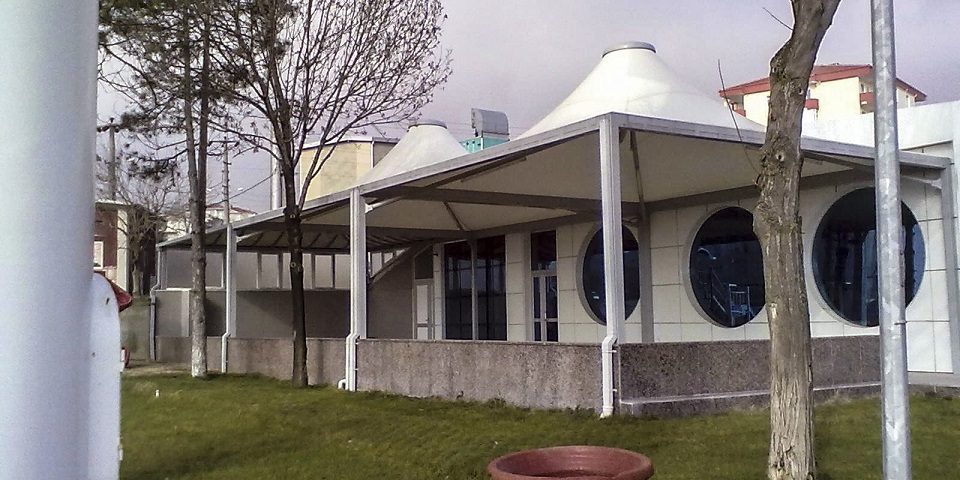Suspended tensioning systems are built with elements that try to pull. However, a structure does not consist entirely of elements that try to pull. The loads formed on the membrane surface are transferred to the pressure, bearing elements such as struts, beams, and arches that try to bend. Tensile membrane construction systems differ from traditional construction systems in form, material and structural behavior. Tensile membrane structure systems show great deformation under load. In order to eliminate the destructive effects of this deformation, there are principles specific to tension systems that must be followed at the design stage.
Unlike conventional structural materials, structural membranes are considered to have no bending and compressive stiffness. The only carrier property of structural membranes is tensile strength. How is it possible to use a material that weighs roughly 1kg/m2 and is 1mm thin, with no notable rigidity other than tensile strength, as a material that resists wind and snow loads? The answer to the question is based on two fundamental, interrelated principles that make tensile membrane construction systems possible. These two basic principles are form and bias.
Form
The basic form of the tensile membrane structure systems is an anticlastic surface with two opposing curvatures. This form is a structural necessity when we aim for a surface that will resist snow and wind loads. The opposing double curvature surface forming the membrane structure form is not just a geometric shape, but is the result of a physical equilibrium state where all points forming the surface are in balance. Minimal surfaces to be created in a 3-dimensional wire frame using soapy water is an example of this form. The starting point of the form is not aesthetic and visual concerns, but is based on an imitation of nature in a structural sense.
bias
The process of obtaining a structural surface consisting of opposite curvatures is called form finding. During this process, the two main factors that determine the form are the environmental conditions and the tensile force applied to the surface. The environmental conditions are the support points and the edge elements. Updating the created form can be achieved by changing the environmental conditions and the amount of tensile force applied to the surface. The tensile force applied to the surface generally differs according to the directions of the membrane surface.
During assembly, a bias is applied to the surface, taking into account the tensile force that shapes the surface during the form-finding phase. Thanks to this bias, the membrane surface reaches the geometry obtained in the form-finding phase.
The bias is achieved by mechanical stretching of the membrane surface. Tensioning is applied with tensile force at corner points in a system surrounded by ropes. Because the membrane surface is concave at the edges, the pulling force applied to the ropes causes the membrane to stretch along the edge rope. Tension on a membrane surface terminated by ropes is caused by the axial pulling force in the ropes. There is a relationship between the pulling force applied to the rope and the edge spring depth of the membrane surface. The targeted surface bias can be achieved with greater force in a system with a low spring depth.

